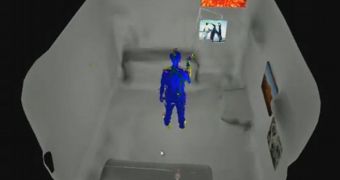Next-generation projectors could be used to augment environments with digital content to the point of entire rooms becoming immersive 3D computing spaces.
The evolution of Natural User Interfaces enables users to seamlessly control digital graphics that are projected on every surface, as a new demo for Augmented Projectors from Microsoft research shows.
Have a look at the video embedded at the bottom of this article in order to get a taste of NUI + augmented projectors + 3D computing environments.
“We explore new parts of the design space for interacting using handheld projection in indoor spaces, in particular systems that are more "aware" of the environment in which they are used,” revealed Microsoft Researchers Steve Hodges and David Kim.
“This is defined broadly as either spatial awareness, where the projector system has a sense of its location and/or orientation; or geometry awareness, where the system has a sense of the geometry of the world around it, which can encompass the users’ hands and body as well as objects, furniture and walls. Awareness like this can be enabled through the use of sensors built into the handheld device, through infrastructure-based sensing, or a combination of the two.”
Projects such as Augmented Projectors from Microsoft Research offer a unique perspective on the potential evolution of computing.
The end goal is to transform everything from an empty wall to the inside of a desk drawer into a surface which enables users to interact with their computer.
Projecting content inside a room and then tracking the user is one way of doing this, of course, as Softpedia readers will be able to see in the video below.
“This paper seeks to better understand the interactive possibilities this type of awareness affords mobile projector interaction. Previous work in this area has predominantly focused on infrastructure-based spatial-aware projection and interaction,” Hodges added.

 14 DAY TRIAL //
14 DAY TRIAL //